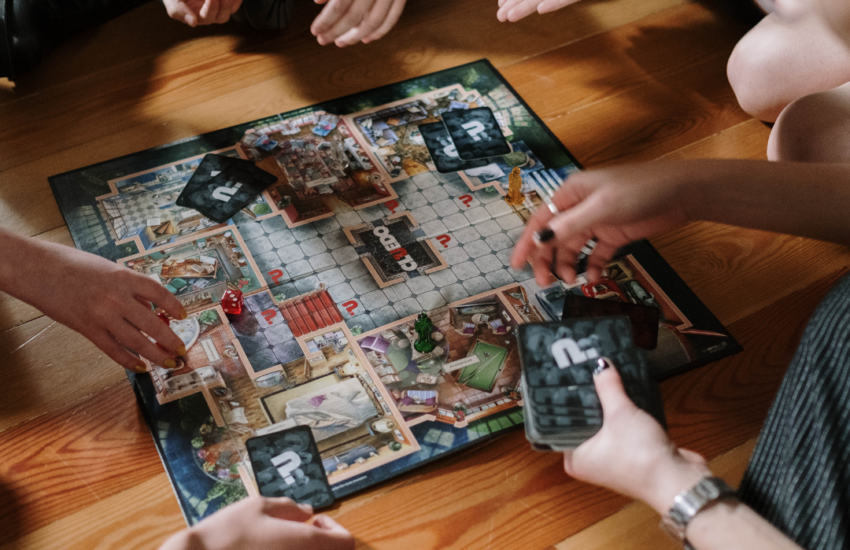How to Host a Stress-Free Dinner Party: Tips for a Relaxed and Enjoyable Evening
Hosting a dinner party can seem daunting, but with the right preparation and mindset, it can be a stress-free and enjoyable experience for all involved. A well-organised event allows the host to focus on creating a warm atmosphere, where guests can relax and engage in delightful conversation.
The key to a successful dinner party lies in thoughtful planning. From selecting a manageable menu to arranging seating, every detail contributes to the overall flow of the evening. By adhering to practical tips and strategies, any host can transform their gathering into a memorable occasion without the accompanying anxiety.
Ultimately, embracing a laid-back approach while ensuring that everything is set before guests arrive helps cultivate a welcoming environment. With these insights on how to host effectively, anyone can achieve a delightful and uncomplicated dinner party that leaves a lasting impression.
Planning Your Stress-Free Dinner Party
Effective planning ensures a smooth and enjoyable dinner party experience. By carefully selecting the date, creating the right guest list, and setting a theme, hosts can significantly reduce stress while maximising enjoyment.
Selecting the Date and Sending Invitations
Choosing the right date is crucial. Consider the availability of potential guests, especially during peak party seasons when schedules are often packed. A weeknight may work for a casual gathering, while weekends might suit larger celebrations.
Once the date is set, sending invitations promptly is essential. Invitations can be sent through various methods-traditional cards, emails, or event platforms. This allows guests to confirm their attendance early, helping the host plan accordingly.
Setting a Realistic Guest List
A manageable guest list is key to a stress-free atmosphere. The host should consider the size of the space and the nature of the gathering. A smaller group often leads to more intimate conversations and easier coordination.
Writing down potential guests helps clarify who to include. It is important to think about the dynamics among guests, ensuring everyone can enjoy each other’s company. Balancing familiar faces with new acquaintances can add variety and vibrancy to the event.
Choosing a Theme and Creating the Atmosphere
A well-defined theme can enhance the dinner party experience. Whether it’s a seasonal motif, a cultural cuisine, or a casual get-together, the theme guides menu choices and decor, creating a cohesive feel.
Enhancing the atmosphere involves attention to lighting, table settings, and background music. Soft lighting can create intimacy, while a simple table arrangement with fresh flowers adds a personal touch. Background music should complement the atmosphere without overwhelming conversation, contributing to a pleasant dining experience.
Designing the Perfect Dinner Party Menu
Creating an inviting dinner party menu requires careful consideration of various elements, from course balance to guest dietary needs. A thoughtfully designed menu enhances guest enjoyment and simplifies hosting tasks.
Balancing Courses for Simplicity and Enjoyment
A well-structured menu typically features three to four courses: starter, main, and dessert. This balance helps maintain pace and keeps guests engaged.
Opt for dishes that complement each other without overwhelming the palate. For instance, pairing a light soup with a hearty main dish can create harmony.
Suggested Course Examples:
- Starter: A seasonal vegetable soup.
- Main: Herb-crusted roast chicken with seasonal vegetables.
- Dessert: Fresh fruit tart with a light custard.
Consider the prep time. Dishes that can be made in advance will reduce stress on the day of the event.
Incorporating Canapés and Snacks
Canapés add elegance and provide guests with something to nibble on while mingling. These small bites can be prepared ahead of time, allowing for a smoother hosting experience.
Select a variety that caters to different tastes:
- Vegetarian: Stuffed mushrooms with cream cheese.
- Meat-based: Mini skewers of marinated chicken.
- Seafood: Smoked salmon blinis.
Offering a selection ensures there’s something for everyone. Presentation is key; display canapés on elegant platters to enhance the visual appeal.
Accommodating Dietary Preferences
Guests are increasingly diverse in their dietary requirements. It is essential to ask about any specific preferences or restrictions ahead of time.
To accommodate different diets:
- Vegetarian/Vegan: Offer a hearty vegetable risotto or a vegan curry.
- Gluten-Free: Use quinoa or rice-based dishes to cater to gluten intolerances.
- Allergies: Clearly label dishes if they contain common allergens like nuts or shellfish.
By planning for these preferences, the host can ensure all guests feel considered and included, contributing to a more enjoyable evening.
Setting the Scene with Stylish Details
Creating a visually appealing dinner party environment sets the stage for a memorable evening. Thoughtful arrangements in place settings and décor, along with carefully chosen drinks and a suitable atmosphere, enhance the dining experience. Attention to these details can transform an ordinary gathering into something special.
Arranging Place Settings and Table Décor
Start by selecting a cohesive theme that reflects the occasion. Each place setting should include essential items: a dinner plate, salad plate, cutlery, wine glass, and water glass.
Consider using cloth napkins instead of paper; they add a touch of elegance. Arrange them neatly, perhaps in a holder or folded artistically.
Table décor should complement the theme. Centrepieces can include fresh flowers, candles, or seasonal elements. Aim for a balance between eye-catching and functional.
Avoid overly tall arrangements, as they can obstruct conversation.
Use table runners or luxury gold placemats (for added elegance) to add texture. Choose colours that harmonise with your dinnerware to create visual interest.
Planning Drink and Cocktail Offerings
A well-considered drink menu elevates the dinner party experience. Start by offering a signature cocktail that ties into your theme.
Examples include a refreshing gin and tonic with fresh herbs or a fruity sangria.
In addition to the cocktail, provide a selection of wines-one red and one white-to suit different tastes. Always include a non-alcoholic option, such as sparkling water or a mocktail, for guests who prefer not to drink alcohol.
Organise drinks in advance to avoid last-minute stress. Prepare any cocktails beforehand and keep them chilled.
Display the drinks station attractively. Use clear glassware and label options for easy selection. This thoughtful presentation invites guests to mix and mingle.
To spice up the party a bit more, hosts can consider adding some cannabis gummies and vapes like Lost Mary Nera 30000 to the mix, potentially making way for an unforgettable experience.
Lighting, Ambience, and Background Music
Lighting plays a critical role in setting the mood. Avoid harsh overhead lights; instead, opt for soft, warm lighting options. Candles can create a cosy atmosphere, while string lights offer a whimsical touch.
Dimmed lights can encourage a relaxed setting for conversation.
Background music should be carefully curated to enhance, not overpower, the gathering. Choose a playlist that fits the dinner’s theme and is at an appropriate volume for easy conversation.
Instrumental or acoustic versions of popular songs can provide a pleasant backdrop without distraction.
Consider using a mix of classics and contemporary tracks to suit diverse musical tastes. Adjust the music as the evening progresses, raising energy levels as the dinner moves towards dessert or after-dinner mingling.
Effortless Hosting on the Day
Efficient management of time and engaging with guests are crucial for hosting a stress-free dinner party. Managing unexpected situations can enhance the experience for both the host and attendees.
Time Management and Last-Minute Preparation
Planning the day’s schedule is essential. Begin with a detailed timeline to allocate specific times for cooking, setting the table, and welcoming guests.
- Cooking Schedule: Prioritise dishes that can be prepared in advance. Aim to finish cooking at least an hour before guests arrive.
- Setting the Table: Arrange the table in advance. Use decorative items that reflect the meal theme.
Consider creating a checklist for essential tasks. This helps to ensure that everything flows smoothly, preventing last-minute chaos. When time is managed effectively, the host can enjoy the gathering rather than feeling rushed.
Engaging with Guests While Hosting
Engagement helps create a welcoming atmosphere. The host should greet guests personally as they arrive.
- Ice Breakers: Prepare a few conversation starters to ease social interactions. Topics might include shared interests or recent events.
- Food and Drink: Offer drinks right away, ensuring everyone is comfortable.
As the evening progresses, the host should circulate among guests, initiating conversations and ensuring no one feels left out. Active engagement shows attentiveness and fosters enjoyable interactions.
Troubleshooting Common Dinner Party Challenges
Preparation aids in addressing potential issues that may arise during the event.
- Dietary Restrictions: Ask guests to inform them about allergies or preferences beforehand. This allows for suitable meal adjustments.
- Spills or Breakages: Keep a few cleaning supplies handy for swift clean-ups. A relaxed attitude towards minor mishaps helps maintain a positive atmosphere.
If a dish doesn’t turn out as planned, the host can address it with humour. Offering an alternative or explaining the situation maintains the evening’s enjoyment. With these strategies, handling challenges becomes more manageable.



